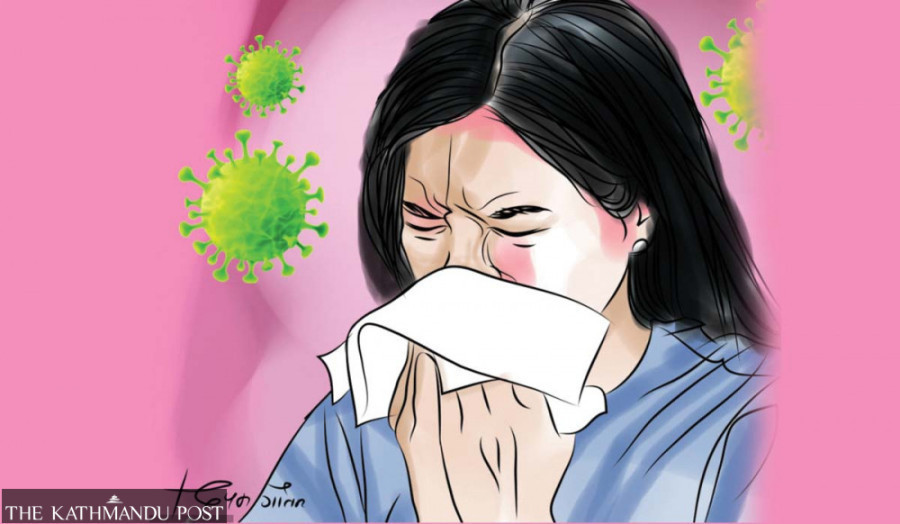Health
Over 1,000 people infected with swine flu virus since January
Experts concerned as fewer than one-fifth of influenza-like illnesses are diagnosed in Nepal.
Arjun Poudel
At least 1,072 people from across the country have been infected with A(H1N1), also known as the swine flu virus, since January, this year.
Data provided by the National Public Health Laboratory shows that 373 others were infected with the influenza B virus, 75 with the A (H3) virus, also known as Hong Kong Flu, 13 with co-infection of swine flu and coronavirus, and two with co-infection of influenza B and coronavirus.
What concerns public virologists and infectious disease experts in Nepal is that less than one-fifth of cases of influenza-like illnesses are diagnosed, and neither the doctors attending patients nor the authorities concerned bother to know the real cause of ailments.
They say that of the swab samples of 8,739 people with an influenza-like illness, only 1,743 tested positive for various kinds of influenza.
“The cause of ailments of the rest of people are not known, which should be a cause of serious concern to the researchers as well as policymakers,” said Dr Sher Bahadur Pun, chief of the Clinical Research Unit at Sukraraj Tropical and Infectious Disease Hospital. “The criteria for collecting the swab samples for influenza test is that patients should have an influenza-like illness, but only less than one-fifth of samples are testing positive for influenza.”
The laboratory only maintains a record of the positive cases but does not tell anything about fatalities due to infections. Experts say the number of people infected with influenza could be several times higher than the data provided by the laboratory, as many people suffering from influenza-like illness do not seek treatment. Even for those who do seek treatment, in most cases, the underlying cause of their ailments often remains undiagnosed.
“The next pandemic could also be a pandemic of respiratory viruses,” said Pun. “We will not be able to lessen the risk of outbreaks in future if we continue ignoring the risks. Authorities must step up surveillance and investigate the underlying causes of these ailments.”
A recent report by the Nepal Statistics Office also shows that cold and fever remain a significant concern, with an increase from 43.7 percent in 1995/96 to 51. 5 percent in 2022/23.
Doctors say more people get infected with viruses during the seasonal changes, as most viruses—adenovirus, rhinovirus, influenza virus, and even coronavirus—become active during these times and winter.
But this does not mean respiratory viruses do not spread at other times.
“People are getting continuously infected with respiratory viruses in other seasons as well. Those with weak immunity could become more severely affected by the infection,” said Dr Raju Pangeni, a pulmonologist. “Besides urging people to take precautions against these risks, authorities must step up surveillance measures to know the real causes of influenza-like illnesses.”
As very few people in Nepal receive flu shots. Experts say unvaccinated elderly people and those with compromised immunity are at risk of severe respiratory virus infections.
Doctors say the influenza virus causes respiratory complications, which affect the lungs. It quickly spreads in communities. The diseases can cause fever, cough, body aches, occasional vomiting, diarrhoea and pneumonia.
They say that early diagnosis is crucial for preventing infection. Patients recover quickly if treated on time. Both the severity of the disease and the number of deaths increase if seasonal influenza cases are not diagnosed on time, according to experts.




 16.12°C Kathmandu
16.12°C Kathmandu














